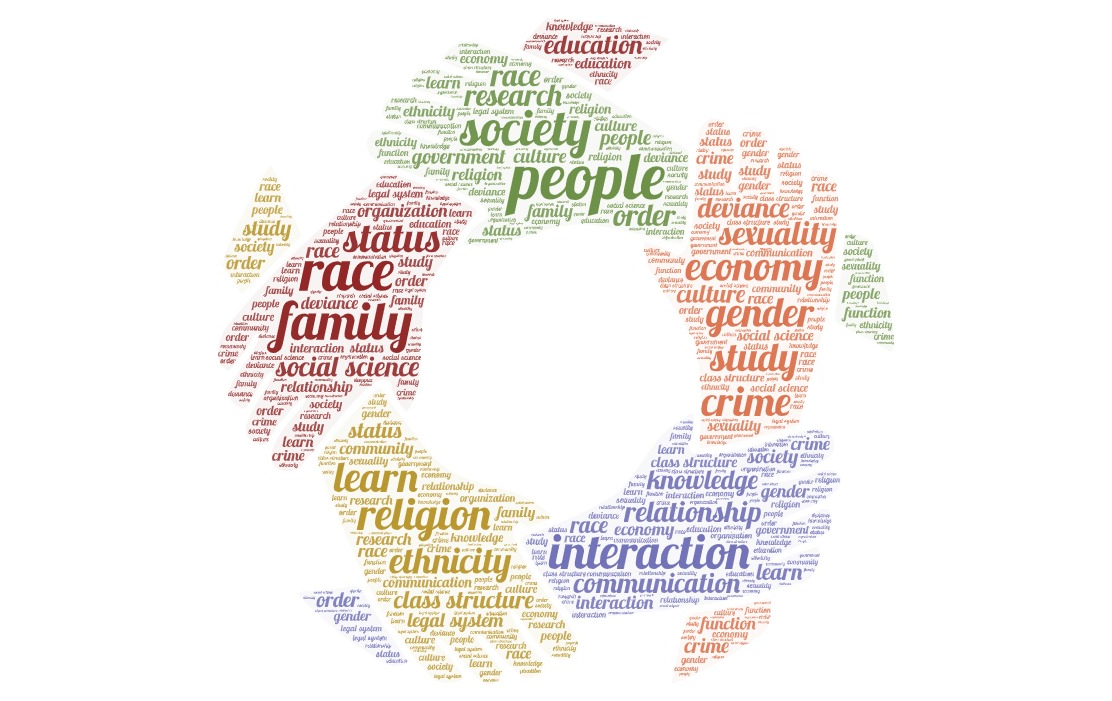5.1 Chapter Introduction

This is where we will start to investigate the many sociological approaches to understanding crime (figure 5.1). A lot of criminological theories are nestled under a sociological umbrella, meaning that they apply a sociological lens to the study of crime and assess the influence of sociological concepts, such as poverty or power, on offending behavior. While these theories fit under the positivist paradigm, it is easier and more practical to make sense of them by learning about categories of theories. There are many ways to categorize theories, and there is often a lot of overlap between them. As we study each theory, think about the similarities and differences between the theories and categories.
The remaining chapters, particularly this chapter and Chapter 6 and Chapter 7, will look at theories that take a sociological approach to understanding crime to some extent. Compared to the classical, neoclassical, biological, and psychological approaches to criminal behavior, these theories will prioritize societal factors in criminal offending. Specifically, we will look at social structural and strain theories, social learning theories, subcultural theories, social control theory, and social interactionist theories. Chapter 8 will explore more critical perspectives.
In this chapter, we will discuss the concept of anomie and societal development to set the stage for strain theories. We will also discuss the establishment of The Chicago School and the theoretical thinking that came out of it. Finally, we will assess how these theories have impacted criminology as a field and how they are still relevant.
Learning Objectives
After reading this chapter, students will be able to do the following:
- Discuss the foundation of social structural and strain theories in terms of the race, gender, and societal status of the theorists.
- Explain the creation of seminal (classic) sociological understandings of crime.
- Evaluate how social structure is important in understanding behavior.
- Describe the social and political context in which classic sociological theories developed.
- Analyze the influence of society on criminal outcomes.
- Recognize the influence of sociological theories on policy.
Key Terms
- Anomie: a state of normlessness in society, especially during societal transition
- Broken windows theory: a theory that claims the environment of a particular space signals its health to the public and that signs of dilapidation and decay attract more serious crime
- Collective efficacy: the ability of a community to mobilize their existing social networks toward common goals, especially against crime, in their communities
- Concentric zone theory: a theory that takes an ecological approach to understanding city structure and crime by sectioning a city like the circles on a dart board and finding that the zone in transition, which exists between the area where people work and the area where they live, is the most criminogenic
- General strain theory: a theory that posits different types of strain, felt at the individual level, can lead to frustration and negative emotions that may lead to crime if someone does not have adequate coping skills to deal with those strains
- Relative deprivation: the idea that inequality and the gaps between wealth and poverty in a single place can lead to negative perceptions of one’s situation and result in crime
- Social disorganization theory: the theory that neighborhoods with weak community controls caused by poverty, residential mobility, and ethnic heterogeneity will experience a higher level of criminal and delinquent behavior
- Social structure: the framework and relationship between institutions, groups, and norms in a society; all the things that make up a society
- Strain theory: a theory that assumes a society has conventional goals and means to achieve them and that people who are unable to achieve conventional goals due to blocked opportunities experience structural strain and may adapt in a way that involves criminal behavior
Licenses and Attributions for Chapter Introduction
Open Content, Original
“Chapter Introduction” by Jessica René Peterson and Curt Sobolewski is licensed under CC BY 4.0.
Figure 5.1. Graphic by Jessica René Peterson is licensed under CC BY 4.0.

